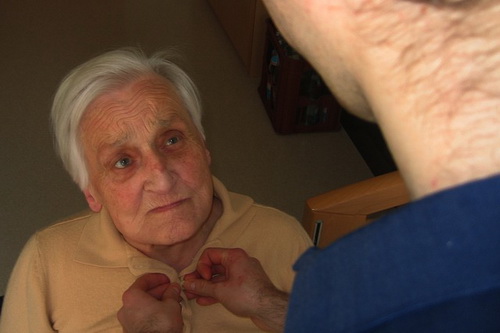
Dementia — The Basics
Dementia is a set of symptoms that may be progressive (most frequently) or static resulting from degeneration of the cerebral cortex which controls the “higher” brain functions. It entails a disturbance of memory, thinking, learning ability, language, judgment, orientation and comprehension. These are accompanied by problems with control of emotions and behavior. Dementia is most frequently seen among elderly individuals. An estimated 5% of the total population above 65 years of age is affected. It is very difficult to get accurate figures on the prevalence of dementia — partly because there is a natural decline in brain function with age, and partly due to varying diagnostic criteria. Currently available statistics estimate 1% of the population below 65 years of age, 5-8% of people between 65–74, 20% of people between 75-84 and 30-50% of people 85 years or older are suffering from dementia.
- Important notification about information and brand names used in this slideshow!
- Photo courtesy of geralt by Pixabay : pixabay.com/en/civilian-service-care-dementia-63616/
- Oxford core text in Psychiatry

Types Of Dementia
Dementia covers a broad spectrum of clinical features. Although there are no distinct types of dementia, the disease can be broadly divided into three according to the natural history of the disease. Fixed impairment of cognition – This type of dementia does not progress in terms of severity. It results from some type of organic brain disease or injury. Example: stroke, meningitis, reduction of oxygenation of cerebral circulation. Slowly progressive dementia — This type of dementia starts out as an intermittent disturbance of higher brain function and slowly worsens to a degree at which daily life is affected. This type of dementia is often caused by diseases that make the nerves degenerate slowly (neurodegenerative). Example: Alzheimer’s Disease, multiple sclerosis. Rapidly progressive dementia – This type of dementia does not take years to manifest itself but does so in mere months. Example: Creuzfeldt-Jacob’s Disease, prion disease.
- Important notification about information and brand names used in this slideshow!
- Photo courtesy of Bev Sykes by Flickr : www.flickr.com/photos/basykes/7158418/
- Oxford core text in psychiatry
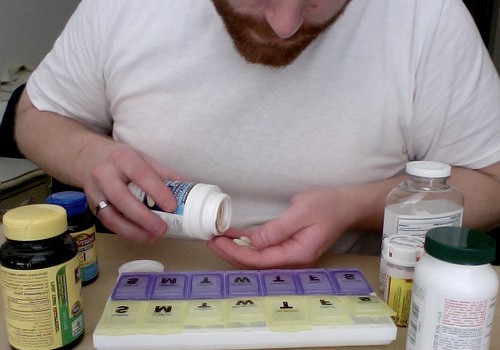
Other Causes Of Dementia
In addition to the aforementioned causes, dementia can manifest as a component of other rare disorders, such as: • Neuroacanthocytosis – Genetic disorders pertaining to movement and red blood cell morphology. • Cereobrotendinous xanthomatosis – Deposition of cholesterol plaques in brain and tendinous structures. • Alexander disease – A very rare genetic disorder charcterised by a slowly progressing degereation of neurons. This disease is fatal. • Fatal familial insomnia – A very rare autosomal dominant disease characterized by progressively worsening bouts of insomnia leading to hallucinations, psychosis and finally coma. • Krabbe’s disease – A progressive neurodegenerative disorder that affects Myelin. • San filippo syndrome – Autosomal recessive mucopolysaccharidosis. • Canavan disease – An autosomal recessive condition that causes aspartoacylase deficiency.
- Important notification about information and brand names used in this slideshow!
- Photo courtesy of Brock Boland by Flickr : www.flickr.com/photos/brockli/4551067279/
- Oxford core text in psychiatry

Conditions Commonly Mistaken By Dementia
Delirium – This condition is characterized by an altered level of consciousness, overactive or irritable behavior, slow muddled thinking, anxious mood, illusions, hallucinations, memory deterioration (registration, recall, retention). A mental state examination can be used to differentiate. Depression – This condition is characterized by a sad appearance, slow inactive movement, reduced energy, poor concentration and memory, guilty thoughts, insomnia, hopelessness and suicidal thoughts. Depression can be mild, moderate or severe. It can sometimes be associated with psychotic features such as hallucination and delusions. Drug induced – Anxiolytics (benzodiazepines), anesthetics (morphine), antiepileptics (phenobarbitone), alcohol can cause cognitive impairment. Normal age-related reduction of memory and activity.
- Important notification about information and brand names used in this slideshow!
- Photo courtesy of Pablo by Flickr : www.flickr.com/photos/lordferguson/4696296265/
- Oxford core text in psychiatry

Causes Of Dementia
Neurodegenerative disorders causing dementia: Alzheimer’s disease, vascular dementia, Parkinson’s disease, fronto-temporal dementias, Lewy body dementia, Huntington’s chorea, prion disease, Normal pressure hydrocephalus (increase of cerebrospinal fluid without increased intra cranial pressure). Intracranial tumors and other space occupying lesions, for example: abnormal growths in the brain like meningioma, astrocytoma, glioma and bleeding in between the membranes of the brain like chronic subdural hemorrhage. Infections – Example: meningitis, encephalitis (most commonly bacterial). Vascular – multiple strokes. Toxins – Example: Alcohol, poisonings (alcohol related hypoglycemic brain damage). Reduced oxygen supply to the brain –Ex: Cardiac arrest, Carbon monoxide poisoning Metabolic diseases – Ex: diabetes (diabetic ketoacidosis, hyperosmolar non-ketotic coma) Endocrine – Ex: reduced thyroid hormones
- Important notification about information and brand names used in this slideshow!
- Photo courtesy of stvcr by Flickr : www.flickr.com/photos/stvcr/3455469018/
- Oxford core text in psychiatry

Risk Factors
Risk factors for dementia can be divided into two categories called modifiable risk factors and non-modifiable risk factors. Modifiable risk factors include: Alcohol – Individuals who frequently consume large quantities of alcohol are at a higher risk of developing dementia. Atherosclerosis – Elevated blood cholesterol levels and plaque-formation can lead to strokes, transient ischemic attacks. High blood pressure — Uncontrolled high blood pressure carries a high risk of dementia. Depression – Depression in later life is related to a higher incidence of dementia. No causal relationship has been found yet. Diabetes – Diabetics have a higher chance of developing Alzheimer’s and vascular dementias. Non-modifiable risk factors are age, family history of dementia and Down Syndrome.
- Important notification about information and brand names used in this slideshow!
- Photo courtesy of Maurício Fotografia by Flickr : www.flickr.com/photos/mauriciofotografia/6894089597/
- Oxford core text in psychiatry
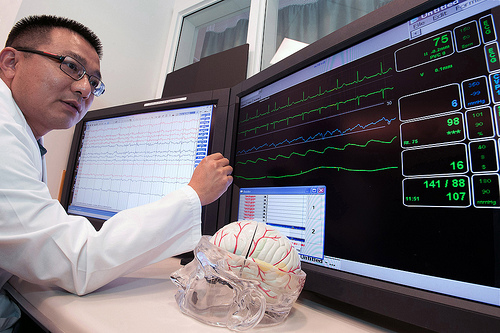
Diagnosing Dementia
The ICD 10 (the World Health Organization's diagnostic tool) gives the standard diagnostic guidelines. Impaired memory and cognitive functioning severe enough to disturb day-to-day activities must be present for dementia to be diagnosed. The patient's memory is affected in such a way that it initially interferes with short-term memory, and later also affects the patient's long-term memory. Dementia is more than impaired memory. It also consists of altered processing of new information and the inability to concentrate on more than one stimulus. Delirium and dementia commonly coexist. Carers may be asked about forgetfulness, personality changes, failure to recognize people, confusion at night, and speech difficulty. The diagnostic assessment examines self-care, social interactions, orientation, and difficulties with daily activities. Dementia can also be accompanied by other features. Therefore the diagnosis can be extended to include them. Example: Dementia with other features – mainly delusional. Mini mental state examination, IQ tests, screening for comorbid conditions and risk factors, Imaging such as CT, SPECT, MRI may also be used to aid the diagnostic process.
- Important notification about information and brand names used in this slideshow!
- Photo courtesy of ibmphoto24 by Flickr : www.flickr.com/photos/ibm_media/8592884992/

Dementia Treatment
Dementia management may involve at-home care, treatment of underlying conditions, medications, and in some cases institutionalized care. Drug treatment is used only when the benefits are deemed to outweigh the risk of side effects. In severe behavioral changes such as agitation and emotional instability the occasional use of sedatives is warranted (Promazine, Thioridazine). Antipsychotic drugs may be prescribed for delusions and hallucinations. If depressive features are profound, anti-depressant therapy may be started. Cholinesterase inhibitors acting centrally are of use to approximately 50 percent of dementia patients, due to Alzheimer’s Disease. They appear to delay the progression of cognitive impairment and in some cases may even improve symptoms for a time.
- Important notification about information and brand names used in this slideshow!
- Photo courtesy of Ministère du Travail, de l'Emploi et de la santé by Flickr : www.flickr.com/photos/ministere-du-travail/3947809740/
- Oxford core text in psychiatry
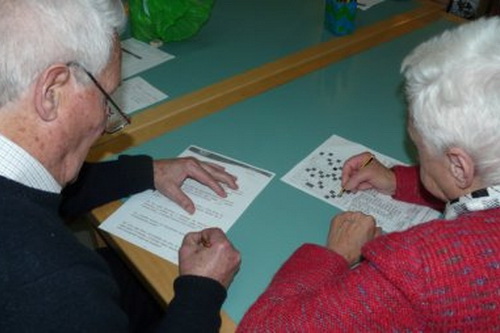
Prevention Of Dementia
No cure is available for dementia. The aim is to delay the progression of the disease. Risk factor modification is also a target. Encouraging mental activity has been shown to slow the progression of the disease. Playing musical instruments, reading and logic puzzles have shown excellent results. Having a good mentally demanding occupation also slows down the progression of dementia. Physical activity also reduces the risk of dementia because vascular dementia is the second most common cause. A high Body Mass Index is related to a higher risk of dementia. Therefore a healthy diet and regular physical exercise prevents dementia. High alcohol consumption increases the risk of dementia while a low level of consumption may even be protective.
- Important notification about information and brand names used in this slideshow!
- Photo courtesy of PortaldelSur ES by Flickr : www.flickr.com/photos/portaldelsur/6521938521/
- Oxford core text in psychiatry
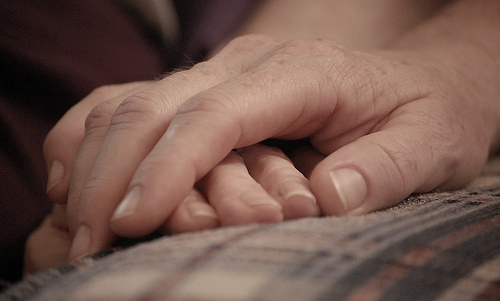
Caring For People With Dementia
During the early stages of dementia, the patient should be told about the disease so they can avoid unsuitable activities such as driving, swimming and riding. The patient will also need help with financial obligations, and the early stages of dementia is a good time to make a will and clarify wishes for care. The patient should be cared for at home whenever possible, and the family needs to be supported by a community-level psychiatric nurse or a practitioner. Institutionalized care in crisis situations or as a holiday admission is required. Long-term hospitalization is done only when absolutely necessary. Increasing daytime activities and reducing daytime sleeping, providing support cues at home are good options. Example: Labeling common items at home and marking pathways to the toilet.
- Important notification about information and brand names used in this slideshow!
- Photo courtesy of MTSOfan by Flickr : www.flickr.com/photos/mtsofan/6083830141/
- Oxford core text in psychiatry


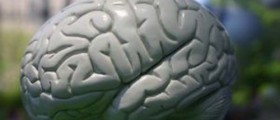


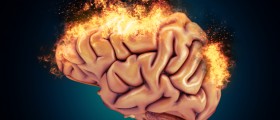




















Your thoughts on this
Loading...